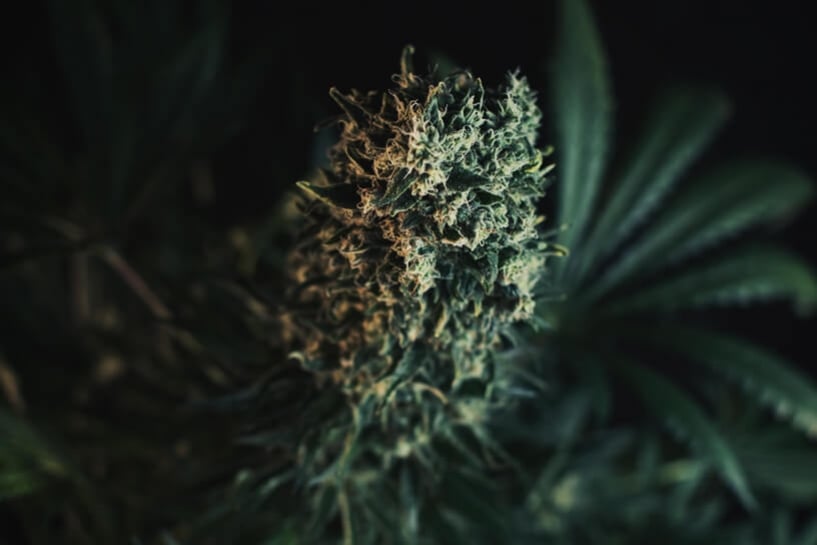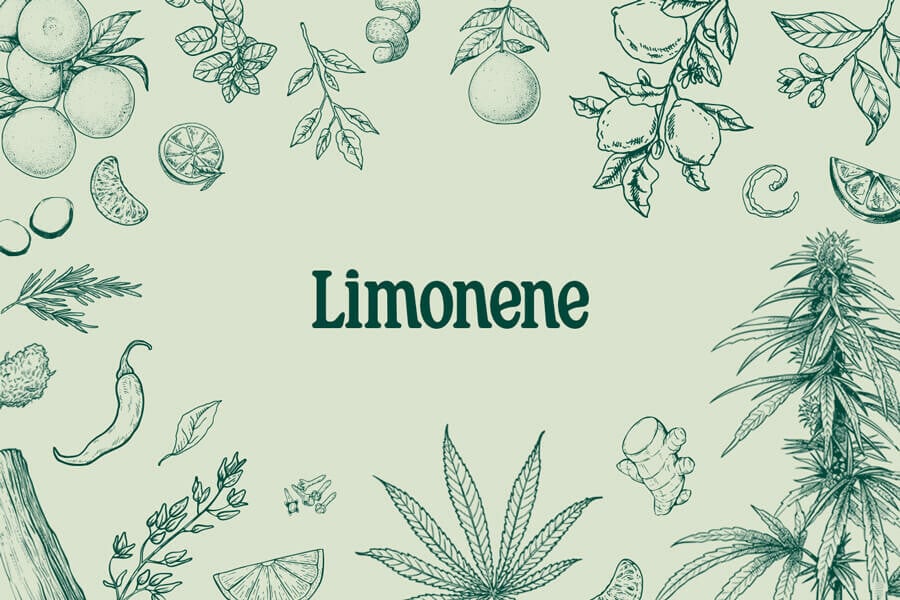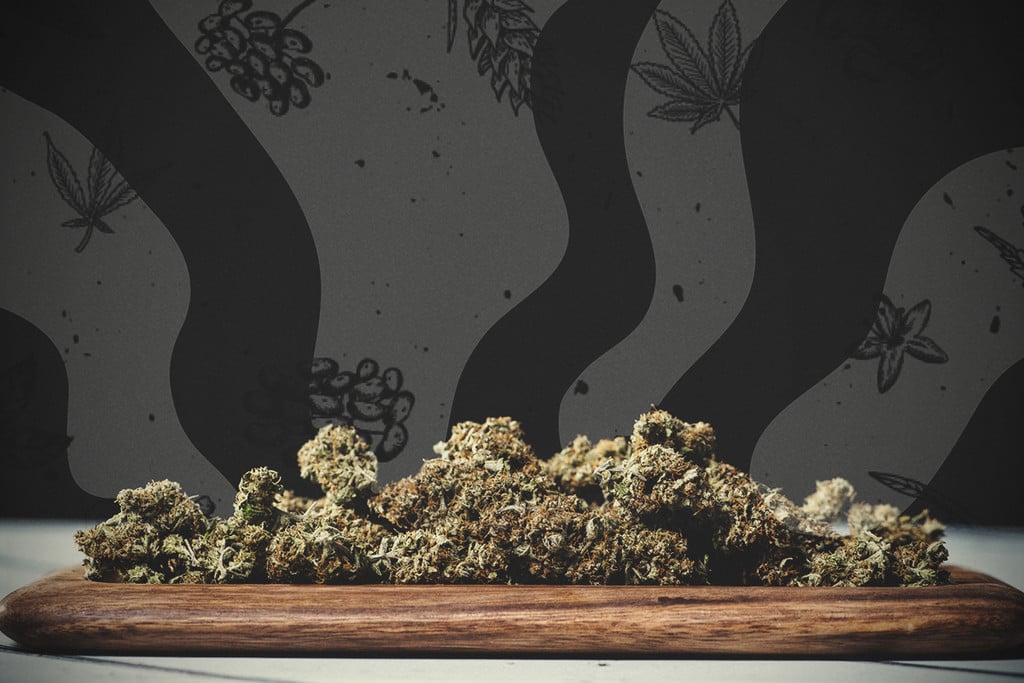.

Tips For Maximizing Terpenes Within Your Cannabis Plants
Using techniques to boost terpenes production can heavily influence the scent and flavour profile of a strain. These techniques are easy to implement, yet the results are profound.
Contents:
What is it exactly that makes cannabis strains differ? At the very foundation are genetic variances that result in differences in growth pattern, shape, and speed of growth. The uniqueness of a cannabis strain is also determined on what comes out of the trichomes—small mushroom-shaped glands that inhabit the flowers and leaves of plants. These glands secrete a resin that is loaded with cannabinoids such a THC and CBD. Differences in the ratio set many strains and their effects apart. But cannabinoids aren’t the only substance swimming within this resin; terpenes are created in the trichomes too.
Terpenes are aromatic compounds found all throughout nature and give plants and fruits their signature scents. For example, the terpene pinene is responsible for the pleasurable aroma associated with walking through coniferous woodland, and limonene is the terpene that gives citrus peel its refreshing smells. The terpene profile within a strain influences its taste and smell, making it an important consideration for breeders when growing and cannabis connoisseurs when selecting a strain to smoke.

However, terpenes have been found to play a much larger role within cannabis plants. Not only do they have their own series of medicinal effects, but they have been found to influence the psychoactive effects of the high through what is known as the entourage effect.
The additional advantages offered by terpenes have made their production all the more important, and many cultivators are now focusing on enhancing their production during growth. Here are some tips to maximize terpene levels to achieve the smelliest weed possible.
IT ALL STARTS IN THE GENES
There are many reasons growers want to maximize terpenes for scent purposes. For casual growers, it means having some heavenly scented buds to enhance smoking sessions and impress fellow smokers. For commercial growers, it means having a more appealing end product at the end of the harvest. For both, there is the potential to enhance effects. When looking to grow the smelliest weed around, seed selection is an important factor. Starting out with strains that have been specifically designed for terpene production will give you a huge head start.
Carefully read the strain description of the seeds you are planning on buying, and select a terpene profile with the characteristics you are looking for.

QUALITY SOIL IS A GAME CHANGER
If you are growing your crop in soil, it’s worth the extra work to make sure it's of prime quality. You can easily purchase high-quality soil, or make your own. Many of the nutrients your plants will use to survive and thrive are found within the soil, and higher soil quality is associated with smellier and more flavourful weed. Growing weed in depleted soils will end in disappointing results.
STRESS YOUR PLANTS, BUT NOT TOO MUCH
Stressing a biological organism can go one of two ways. If just the right amount is applied, the organism will adapt, become stronger, and survive. If too much stress is applied and the organism isn't capable of adapting, it will die. When looking to grow terpene-rich cannabis, just the right amount of stress is required.
Methods such as low-stress training are a great option when seeking buds loaded with terpenes. This technique involves the gentle bending, morphing, and manipulating of branches to force plants to grow in a certain shape. It ultimately creates more main branches that are more spaced out. The end result is a smaller plant that produces larger yields and very smelly flowers.
Defoliation, otherwise simply known as trimming leaves, is another technique that boosts terpene content. Removing additional leaves will open up space in the canopy and allow more light to reach the flowers while simultaneously stressing the plant, boosting trichome production.
Ready to turn stress into scent? Download the Pro Growing Guide for exact nutrient mixes, defoliation steps, UV-B dosing, and environmental targets (PPM/pH, temperature) that elevate your terpene game.
Free Advanced
Growing Guide!

BE MINDFUL OF LIGHTING
Lighting is one of the most important factors when it comes to growing, and plays an especially critical role in terpene production. Trichomes produce resin in nature partly to protect plants from excessive light exposure, a behavior that can be taken advantage of by growers. Exposing plants to UV-B lights for around 2–3 weeks during flowering can easily boost trichome production.
UTILISE TEMPERATURE PROPERLY
Almost all environmental factors can be controlled to manipulated optimal terpene production, with the temperature being an important one. Lowering the temperature at night time will get the trichomes working overtime. Ideally, reduce the temperature by approximately 5 degrees Celsius during the night time. Obviously, be careful not to chill your plants too much that other aspects of growth suffer.

ALWAYS FLUSH YOUR PLANTS
Flushing your plants can add to their scent and flavour by removing excess nutrients. Nutrients can build up in the flowers and overpower the natural flavours produced by the strain. Provide your plants with the purest water possible around two weeks before harvest time to flush the plants.
BE ACCURATE WITH HARVESTING
Terpenes are volatile compounds and it really doesn’t take much for them to degrade and breakdown. If you leave harvest time even a little bit too late, you may start to lose precious scents and aromas. Use a magnifying glass to carefully observe the trichomes on your buds as a basic indicator. Be sure to read up on more in-depth harvesting to learn and refine exactly when it is needed.

DRY AND CURE YOUR WEED CORRECTLY
Although it seems like the work is over after the harvest, there are still tasks to be done. Making sure you dry and cure your weed correctly will ensure the smell and flavour are not reduced. Dry your marijuana over a 2–3 week period in a cool environment. Excess heat will begin to degrade the valuable terpenes. Attempt to maintain a humidity of around 50%.
It’s time to cure after drying it over. Aim for low temperatures, no lighting, and a humidity of around 55%. This process will greatly enhance the taste and smell of your buds.
















































